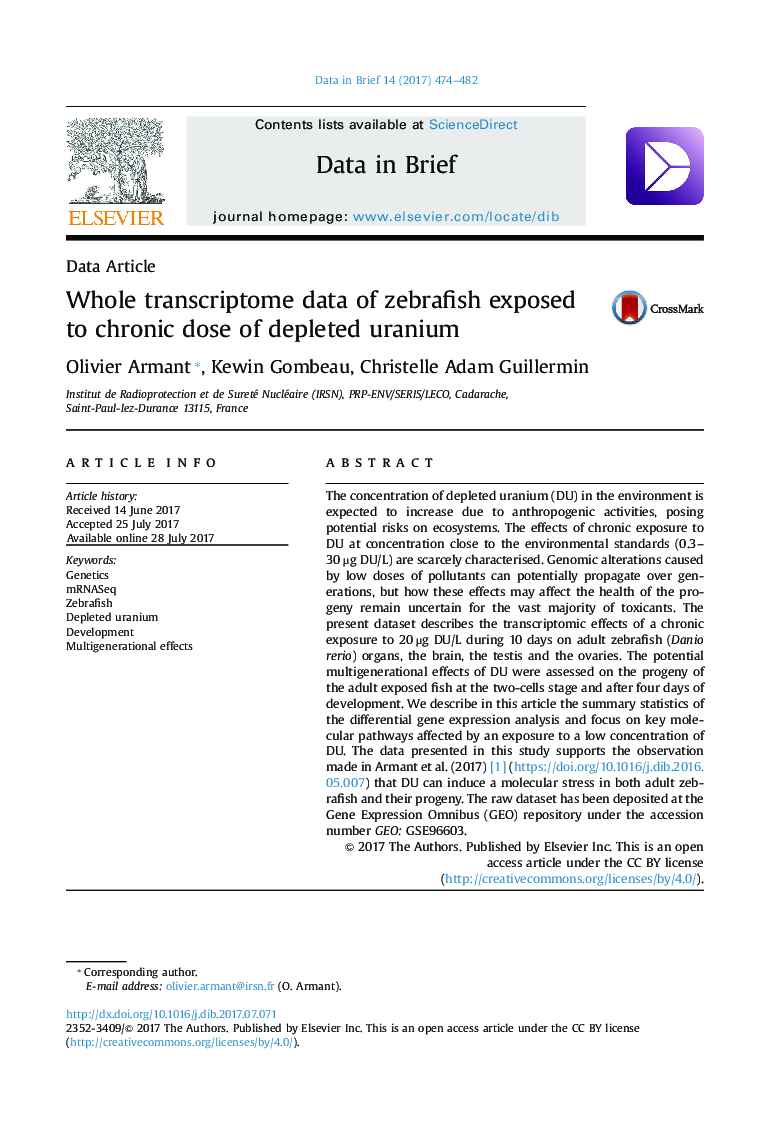| Article ID | Journal | Published Year | Pages | File Type |
|---|---|---|---|---|
| 4765078 | Data in Brief | 2017 | 9 Pages |
The concentration of depleted uranium (DU) in the environment is expected to increase due to anthropogenic activities, posing potential risks on ecosystems. The effects of chronic exposure to DU at concentration close to the environmental standards (0.3-30 µg DU/L) are scarcely characterised. Genomic alterations caused by low doses of pollutants can potentially propagate over generations, but how these effects may affect the health of the progeny remain uncertain for the vast majority of toxicants. The present dataset describes the transcriptomic effects of a chronic exposure to 20 µg DU/L during 10 days on adult zebrafish (Danio rerio) organs, the brain, the testis and the ovaries. The potential multigenerational effects of DU were assessed on the progeny of the adult exposed fish at the two-cells stage and after four days of development. We describe in this article the summary statistics of the differential gene expression analysis and focus on key molecular pathways affected by an exposure to a low concentration of DU. The data presented in this study supports the observation made in Armant et al. (2017) [1] (https://doi.org/10.1016/j.dib.2016.05.007) that DU can induce a molecular stress in both adult zebrafish and their progeny. The raw dataset has been deposited at the Gene Expression Omnibus (GEO) repository under the accession number GEO: GSE96603.
